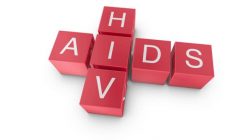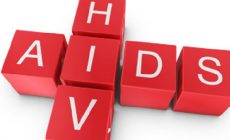The prevalence among the above population is the proxy for new infections.
The increase is, therefore, something which calls for urgent action by all stakeholders to protect this productive group from getting the infection.
This was contained in the 2017 HIV Sentinel Survey (HSS) and Estimates Report, jointly released by the National AIDS and STI Control Programme (NACP).
18,711 Samples
About 18,711 samples were collected nationwide for the report and drawn from 40 sentinel sites strategically located at 17 rural sites, 23 urban sites and 69 antenatal clinics within a period of four months, spanning September to December 2017.
In the last 21 years, data from the report had been used as the primary source for national HIV and AIDS estimates for both planning and for policy interventions.
Greater Accra and Ashanti regions top new infections
The Greater Accra and Ashanti regions are currently having the highest HIV rates in the country.
The two regions both had 3.2 per cent while the Northern Region had the lowest rate of 0.6 per cent.
The Western Region followed with 2.4 per cent, taking the third position, and Volta Region occupying the fourth position with 2.3 per cent.
The report also placed Eastern Region at the fifth position; Brong Ahafo, sixth; Central, seventh, and Upper West and Upper East taking the eighth and ninth positions respectively.
5.2% increase in Obuasi
According to the report, site HIV prevalence also ranged from 0.2 per cent in the Afram Plains (representing the rural areas) to 5.2 per cent in Obuasi (urban areas), with the city median about 2.5 per cent higher, compared to the 1.0 per cent in rural locations.
HIV prevalence rate among pregnant women declines
The prevalence of HIV among pregnant women attending antenatal clinic in the country is on a downward trend.
A linear trend analysis has confirmed a declining epidemic since year 2000, placing the median prevalence for 2017 at 2.1 per cent.
Dr Stephen Ayisi-Addo, the Programme Manager, NACP, said the report was a cross-sectional survey that targeted pregnant women attending antenatal clinic in selected sites across the nation.
The regional prevalence rate ranged from 3.2 per cent in the Greater Accra and Ashanti regions (the highest) to 0.6 per cent in the Northern Region (the lowest).
Dr Mokowa Blay Adu-Gyamfi, the Director-General of the Ghana AIDS Commission, said the increase in new infections among the younger population gave cause for concern.
There was laxity in preventive education, and that needed to radically change.
She underlined the need to strengthen stakeholder collaboration, saying “we should not rest on our oars”.
She urged the redoubling of the effort to cut down new infections, and said HIV remained a threat to the nation’s socio-economic aspirations.
“We must halt mother-to-child transmission of HIV in the shortest possible time through the delivery of sustained anti-retroviral therapy whilst minimising sexually transmitted infections among young people.”
There should be availability of funding through domestic mobilisation, to support all relevant HIV programmes, she added.
By Elvis DARKO, Accra











 (Selorm) |
(Selorm) |  (Nana Kwesi)
(Nana Kwesi)